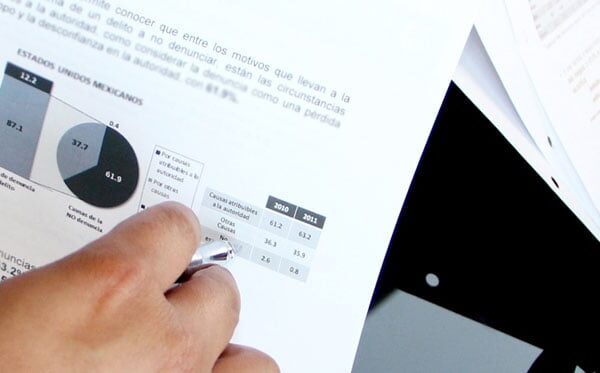How to Stay Connected to Your Customers During the COVID-19 Shutdown
Stay connected to your customers during the COVID-19 shutdown to help your company stay in business and evolve with the changing economic landscape.

The COVID-19 crisis is impacting the small business world and economy in ways we never could have anticipated. It’s important to stay agile as a business and to stay connected to your customers during the COVID-19 shutdown. This can help keep your proverbial doors open long after the crisis has passed, and it can help your business make the necessary changes both short and long-term to keep your customers happy and engaged with your brand.
We are pleased to partner with Sam Adams, who is so generously providing us with information on helping entrepreneurs develop strategies to keep your customers in the loop and supporting your company and brand during the COVID-19 crisis.
Matt Withington, Director of Marketing discusses approaches to brand continuity, Connor Davy, Digital Marketing Manager gives great social media strategies, and Joe McGrail, Manager of E-Commerce and Marketplace Activation communicates the best way to set up and use online stores for your business.
Brand Approach
Matt Withington acknowledges that we’re operating in an unprecedented time and it’s important to both take into consideration the mindset of the public and to understand the changing needs of your customers. While there is fear and panic among some people, it’s important not to capitalize on the crisis. He advises against using marketing ploys to get customers in the door at this point in time. Keep your brand respectable by sticking to strategies that are truly helpful in the face of the crisis, and that encourage calm and wellbeing.
Withington says these main strategies are ones to keep in mind while communicating with customers throughout the COVID-19 crisis:
Brand Strategy and Marketing During the COVID-19 Crisis
Withington advises that it’s important you tailor your brand messages appropriately to what’s happening in the world. Adjust any current marketing messages and be self-aware. Speak in your brand’s voice in an open, honest, and transparent way.
Withington says, “Strategy means knowing when to stay silent just as much as it means knowing what to post and when.” Tread lightly in terms of content, message, and the tone of the messages, which all need to be scrutinized daily. He says it’s a fine line between being there for customers and knowing when to not say anything at all.
“Be flexible,” says Withington. “A certain type of messaging might feel okay one day and not the next day.” Your brand’s communication will have to flow and adapt along with events as things change from days to weeks, to months out.
Most important, Withington says to look ahead and take good care of your customers. You can use this time to build trust with your customers as you let them know that you’re there for them and you have their best interests at heart during this challenge. When you help and contribute in this time of need, it can have long-term positive effects on both your customers and your brand and business. You can emerge from this with a stronger brand.
Brand Development During the Crisis
Withington says to take advantage of the time at home during the shutdown by doing some brand development exercises. The first exercise is called “This, Not That.” Withington says to write down a list of word pairs to help define what your company is, and what it isn’t. For example: “Smart, but not complicated. Simple, but not boring. Transparent, but not chatty.” This exercise can help you further hone your understanding of your brand and your marketing vision and message.
For the second brand-honing challenge, Withington says to think of your brand as a person and then try to describe that person. Think of as many traits as possible. Is your brand a friend, a partner, advisor, or someone else entirely to your consumers?
The third brand development approach Withington talks about is called “What’s Your Story?” Take some time to define your story to engage your customers by telling them how your company came to be and what problem you are trying to solve. Consumers are more apt to connect with a brand with an engaging story, not just a great product. What is the problem your brand is trying to solve? For example, if your own a gym, your brand could be fighting laziness and trying to inspire people. Think about the voice and tone you want to use in order to best represent your brand while you tell your story.
Use an extra layer of common sense and do a good gut check before putting out any communications during the crisis. Above all, strive to be useful and find new ways to be of service across the changing events and business landscape.
Social Media Strategy During the COVID-19 Crisis
Connor Davy says it’s important to look at any social media ads that might have begun running before the crisis hit and make sure the messaging is still appropriate, and make changes when necessary. Make sure that whatever you’re saying on social media is helpful, informative, and provides value with this particular situation of the COVID-19 crisis in mind.
As for new social media messaging during the crisis, Davy says to acknowledge the situation. Lots of people are facing new challenges. Whether or not you are facing personal challenges, it is important to lead your messaging with empathy and understanding of what your customers might be going through.
Davy says to lead with humanity when deciding what to put out there on social media, which is good advice during good times and bad. Your customers care about you and your business, and it’s okay to open up and share the behind-the-scenes of your business. Whether you’re facing challenges, need help, or want to offer support to others in your community, please share this with your customers.
Davy says it’s always important to provide value with your content, but it’s especially important now. It’s important to define what role your business plays during this difficult time. Has your business model changed? Are you providing new services or goods to your customers? Make sure to update your customers on these changes. Davy says, “If it’s appropriate for your brand, some entertainment or levity can also play a role. Try to keep things positive.”
Davy says that in order to craft appropriate, targeted messaging on social media for your customers, you can use the following strategy. First, try to determine how your customers are behaving. For example, are they asking you certain questions? Have you seen an increase in web traffic to certain pages of your business’s website? Use this information to help inform what messages your business puts out there to the public. Second, create your content and don’t be a perfectionist about it.
Davy says, “In a perfect world, we’d all have beautiful, relevant photography ready to be posted. The reality is, you likely don’t have content prepared for this situation. That’s okay! Create content that’s helpful, even if you have to sacrifice aesthetics. Now isn’t the time to use Photoshop.” Ask yourself if it feels right before posting, and trust your gut. If it doesn’t feel good to you to post something, hold off. Davy says to continue to reevaluate day-by-day depending on the situation and adjust accordingly as you continue to post on social media on behalf of your company.
COVID-19 Crisis Impact on E-Commerce Strategy
Joe McGrail says a rapid embrace of online food and beverage shopping is taking place and he predicts the trend will continue to increase in the coming weeks, citing a major increase in the downloads of grocery delivery apps. He says that when consumers realize how convenient and easy it is to order groceries online from the comfort of their home, this new shopping behavior will have staying power and will change how the food and beverage industry does business long into the future. McGrail says to expect long-term shifts in the retail landscape as consumers see how easy it is to have food and beverage brought right to their doorsteps.
McGrail says that it’s a good time to think about and rebuild your strategy around e-commerce to keep up with the changing landscape. As a small business owner who may or may not already have an e-commerce strategy in place, McGrail give us some e-commerce suggestions that you can check your current strategy (or lack thereof) against.
As for where you should sell your product, McGrail says you don’t only have to rely on large national brands like Amazon, Target, or large regional retailers. You can also sell through other local businesses via Instacart, so he advises you to explore local options. If you want to sell via your own website, he says to look into Shopify, which is a software solution that can turn your website into an online store in a matter of days. Due to the impact of COVID-19, Shopify is offering an extended 90-day free trial.
When creating product detail pages to help sell products, McGrail says to be sure to include the following elements: accurate and consistent product titles; product descriptions that include keywords for better search; key features and product benefits; product images; plus any enhanced content such as videos or lifestyle content you might be able to include along with the product details.
McGrail says that as you figure out your strategy during the COVID-19 crisis, you have to balance short-term and long-term business goals. A lot of communities are rallying around buying gift cards for small businesses, which is great for putting cash in the proverbial register today, but he cautions that means people cashing in those gift cards at a later date, which can result in a reduction in future cash transactions as the gift cards are redeemed.
McGrail says to consider creative and out-of-the-box e-commerce strategies to keep business flowing whenever possible. If you have inventory, do what you can to sell it, even if you can’t have your doors open to customers. For some ideas to try, McGrail says to offer curbside pickup, if allowed in your state. He says to find ways to stay alive and afloat. As an example, he says some local hair salons are creating home coloring kits so customers can do their hair at home.
Stay Strong and Stay in Business During the COVID-19 Crisis
Even though it may seem like the business world has shut down while everyone is staying home, it’s important to pivot and find new ways to keep your business open. Stay connected with your customers, strive to make a positive impact in your community, get the help you need, and keep your business top of mind. By finding creative new ways to sell products online, develop your brand, and communicate effectively via social media, your company and your brand can thrive and flow along with the many changes we are seeing in the world.









